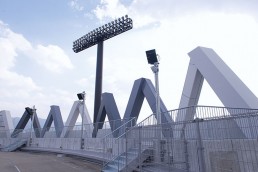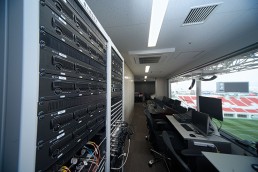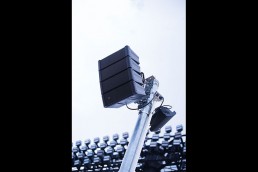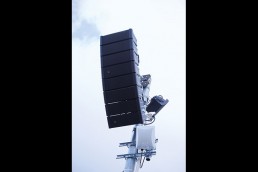This website uses cookies so that we can provide you with the best user experience possible. Cookie information is stored in your browser and performs functions such as recognising you when you return to our website and helping our team to understand which sections of the website you find most interesting and useful.
Hanazono Rugby Stadium
ProjectHanazono Rugby StadiumLocationHigashiosaka, JapanManufacturers TOA AudioSubmitted by TOA Audio
Opened in 1929, the Hanazono Rugby Stadium, Higashiosaka, has led the history of Japanese rugby for an impressive 90 years. A platform for a new era of the sport, the stadium has played host to many major league games, including the Rugby World Cup 2019, which saw South Africa come out on top to a combined match total of over 1.7 million spectators.
Coinciding with the Rugby World Cup, the stadium was dealt a much-needed renovation of its entire sound system, imperative to the adrenaline fuelled atmosphere of a world cup contest. Japan based manufacturers, TOA were chosen to revive the venue’s aging audio. The main goal was to create uniform clarity throughout the venue, while minimising sound leakage.
TOA distributed a range of compact line array loudspeakers with high clarity and directivity control to produce a uniform sound space. Its aim was to divide the listening areas finely and suppress the output of individual loudspeakers, therefore preventing sound leakage outside the arena and reducing potential noise complaints. The products TOA chose included the HX-5 Series and HX-7 Series compact line array loudspeakers, along with digital power amplifiers and a digital wireless system to control the audio output. Speaking about the new sound system, Yukihito Okui, Stadium Manager at Hanazono Rugby Stadium, said: “When I’ve been walking around the different parts of the stadium during the matches, the broadcasts about the game and other announcements come through very cleanly. I think it’s easier to hear even during the game. Rugby matches can be complicated and the rules can be difficult to understand. Even people new to rugby can now enjoy the game more easily, and I think the stadium has become much more accommodating to spectators.”
Ease of use was high on the team’s agenda, so the broadcast status within the stadium is confirmed and configured visually via a PC monitor to reduce operator burden and greatly improve system operability. As well as this, TOA utilised digital wireless equipment, mobile sound wagons, and moveable loudspeakers to reduce interference and make the system easy to use for more general events. Takeshi Tachibana, Press Officer at the 2019 Rugby World Cup, explained: “We’ve created a sound space that makes the sound easy to hear no matter where you are in the stadium. We’ve also added a ‘visual’ element to the sound controls, vastly improving operability.
“The previous equipment itself was old and the quality of the sound wasn’t very good. Some of the loudspeakers had stopped working, making it difficult to hear broadcasts in certain parts of the stadium. The newly renovated system makes it possible to hear broadcasts at the same sound quality and volume wherever you are in the stadium, and the addition of ‘visualisation’ to the control system makes it easy to check, via a PC monitor, the outputs of individual loudspeakers, which makes for a big improvement in terms of operability.”
The Rugby World Cup 2019 was a big push for Hanazono Stadium to upgrade the sound system that was beginning to create some challenges for the games held there. Because the system was so old, age-related declines in performance had become conspicuous, with cracking and audibility variations making broadcasts difficult to hear in parts of the arena. Of course, if the venue was to host the Rugby World Cup, it needed a world-class sound system capable of delivering clear sound to every corner of the pitch, and that is exactly what it did. “The excitement surrounding the Rugby World Cup 2019 was incredible. The stadium hosted four games and rugby fans from all over the world enjoyed the celebrations that were held inside our beautifully renovated stadium,” said Yukihito.
After the soaring success of the Rugby World Cup 2019, the Hanazono Rugby Stadium is looking to a bright and promising future that will see its new renovation bringing in crowds of many supporters of the ever growing, ever challenging world of sport. Looking to the future, Yukihito said: “We’d like to play a role in sports promotion and town development, focusing, of course, on rugby. The stadium is located next to a residential neighbourhood, so first and foremost we’ll need to be considerate of those local residents, but if we can clear those issues, then I think it opens up prospects for using the facilities for various purposes other than rugby.”





